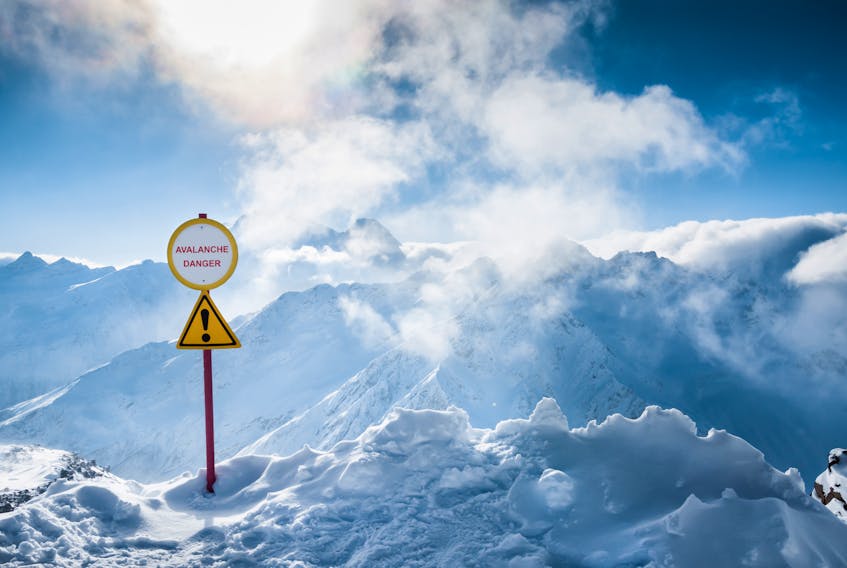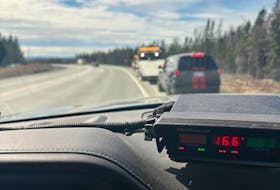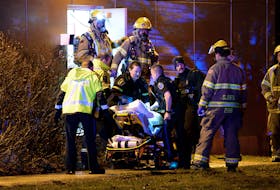The early and often snowfall so far this winter has some people involved in backcountry adventuring concerned about the risk of avalanches.
Last week, Garry MacKenzie of Bay of Islands Volunteer Search and Rescue took the time to share an advisory that had been posted in the Gros Morne Ski Community group on Facebook.
That posting said that, after the latest foot of snow that had fallen in the mountains of the Gros Morne area, people venturing out into the backcountry should be cautious of the risk of snow sliding off of steep slopes. The post noted the fresh powder was on top of layers of wind-packed snow, making it susceptible to slipping off the layer below.MacKenzie, who is the search and rescue group’s special events co-ordinator and also an avid backcountry skier, said those same conditions likely exist throughout western Newfoundland.
What to do to keep yourself safe in avalanche terrain:
- Learn to recognize avalanche terrain. Taking an avalanche course is the best option, but also try the free online avalanche tutorial.
- Avoid exposure to avalanche terrain during the primary conditions that increase avalanche risk—during snow and wind storms, and when temperatures are warming. It’s always a good idea to check the weather forecast.
- Tell someone your trip plan.
- If you choose to ride in avalanche terrain, know how to manage the risk.
- Ride steep slopes one at a time.
- Don’t group up in the run-out zone below steep slopes.
- Everyone in your group should carry a shovel, avalanche transceiver and probe.
- Know the emergency phone numbers in your riding area. Beware that in the backcountry, coverage can be sporadic.
Source: Avalanche Canada
“If it’s like that in Gros Morne, we have essentially the same type of terrain in the Lewis Hills and the North Arm Hills area, which are popular places for people to ski and snowmobile,” said MacKenzie.
While western Newfoundland is prone to avalanche activity significant enough to injure or kill, there is no extensive monitoring of the risk as there is throughout Western Canada. MacKenzie believes the fact there is a densely packed bottom layer, blankets of weaker snow layers on top of it could mean the hazard will linger for some time.
“I think that will be our major base layer for the winter and there may be an avalanche risk for the rest of this season,” he said.
After the latest storm to hit the region Monday, MacKenzie said a heavier layer has now been added on the already unstable snowpack.
Precarious snow accrual on slopes is not the only concern. Windswept cornices hanging over the lips of hills and cliffs could also prove deadly when they give away.
A crumbling cornice can be caused by sound, like that of a snowmobile, MacKenzie cautioned. He urged people on motorized vehicles, especially those modified to be louder than the manufacturer intended, to be careful when riding near overhanging snow.
MacKenzie says it’s crucial that people be aware of their surroundings and to share their observations with others who are also heading out to enjoy the great outdoors
He advised skiers, snowmobilers and anyone else accessing the backcountry to be prepared with shovels, probes and location beacons in the event they suddenly find themselves in an avalanche situation.
Having some way to communicate from deep in the backcountry would be great too, though that can sometimes prove difficult, not to mention futile, in an emergency.
“Given the remoteness of most of the locations people head to, you need to be prepared to get yourself or someone else buried in snow out quickly,” said MacKenzie. “If you can’t rescue yourself or a friend within a relatively short period of time, the rescue is going to turn into a recovery.
See a tutorial about avalanche awareness.
Related:









